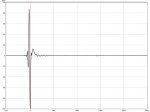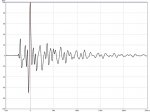I am new to this forum but I do get around. I am really keen to build the B&C speaker suggestion on their website, great drivers but not much information about the design concept. I found some info on this forum with Bennet providing some great info and mentioning he was ready to help, hopefully he chimes in. So I thought ill post my questions here and perhaps I can get a response.
To be honest, I will be using them for home hifi and looking for narrow dispersion speakers. I am also keen on dynamics and a massive punch and slam for the 12 inches and the compression driver. There are no polar plots with the speaker suggestions which is disappointing and we don't even get the crossover point.
My biggest worry is the transient response, the drivers for the F122A and the F122AN are made for a ported design but I hate the transients on a ported design. Can someone tell me how these two will fair compared to a closed box at around .5 QTC...? Ultimately, can I tweak it in any way to improve the transients response down low or is it already designed with a SBB4 alignment in mind...?
I am also guessing the cabinet is designed for PA use so a tweak in the cabinet design won't effect the overall sound of the speaker if the volume is kept and the same baffle dimensions?
Any other info about a smooth response or B&C drivers that have a non fatiguing response for home listening or any options recommended for DIY designs will be greatly appreciated.
To be honest, I will be using them for home hifi and looking for narrow dispersion speakers. I am also keen on dynamics and a massive punch and slam for the 12 inches and the compression driver. There are no polar plots with the speaker suggestions which is disappointing and we don't even get the crossover point.
My biggest worry is the transient response, the drivers for the F122A and the F122AN are made for a ported design but I hate the transients on a ported design. Can someone tell me how these two will fair compared to a closed box at around .5 QTC...? Ultimately, can I tweak it in any way to improve the transients response down low or is it already designed with a SBB4 alignment in mind...?
I am also guessing the cabinet is designed for PA use so a tweak in the cabinet design won't effect the overall sound of the speaker if the volume is kept and the same baffle dimensions?
Any other info about a smooth response or B&C drivers that have a non fatiguing response for home listening or any options recommended for DIY designs will be greatly appreciated.


